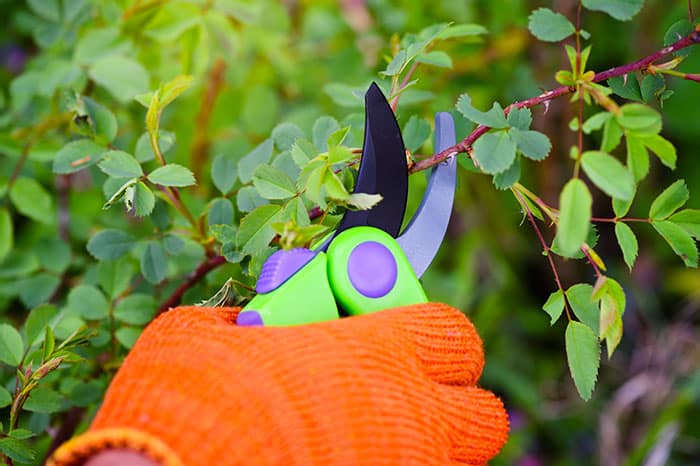Tree trimming, also known as pruning, is a process of cutting and shaping trees and shrubs to improve the appearance or health of the plant. It is an important part of horticulture and arboriculture.
Pruning is a vital part of tree care. It improves the health and appearance of trees and helps protect people and property. It should be carried out by a professional arborist to ensure that it is done correctly. This article will explain the importance of pruning and discuss the benefits that it can provide for plants and landscapes.

What is the Definition of Tree Pruning?
Tree pruning is the selective removal of branches or foliage from a tree to improve its shape, encourage fruit production, or remove damaged or diseased parts. It is important to prune trees regularly to keep them healthy and prevent them from becoming a hazard. It is important to prune trees regularly to maintain their vigor and prevent them from becoming overgrown or unsafe. Pruning also helps to stimulate new growth and can be used to shape the tree’s canopy. Many different techniques can be used when pruning a tree, and the best method will depend on the type of tree and the desired results. With proper care, tree pruning can help keep your trees healthy and looking their best.
Importance of Pruning
The importance of pruning trees cannot be underestimated. Pruning helps with:
- Improving the overall health and structure of a plant.
- Prevent the spread of infection and disease by removing dead or diseased branches
- Allowing air and light to circulate more easily throughout the plant, promoting healthier growth.
- Making it look more aesthetically pleasing and helping it grow stronger and less likely to be damaged.
- Producing more flowers or fruit by pruning at the correct time of year.
- Improving the shape and overall appearance of a garden plant.

Improved Plant Health
Pruning is a vital tree maintenance practice that helps to ensure the health of trees. By selectively removing dead or diseased branches, pruning can help to improve air circulation, promote new growth, and reduce the risk of pests and diseases. In addition, pruning can also help to shape the tree and encourage it to grow in the desired direction. With proper care, pruning can help to improve the overall health of trees and prolong their lifespan. While it is important to prune trees regularly, it is also important not to over-prune them. Too much pruning can damage the tree and make it more susceptible to pests and diseases.
Reduced Pests and Insect Control
Pruning can help to reduce pest and insect problems by encouraging the growth of strong, healthy plants. By removing damaged or diseased limbs, pruning allows for better air circulation and sunlight exposure, which helps to prevent the spread of pests and diseases. In addition, pruning helps to stimulate new growth, which can replace weak or damaged areas of the plant. As a result, pruning can play an important role in maintaining the health of your plants and improving their resistance to pests and diseases.
Enhanced Plant Growth
Pruning can enhance the growth of trees by:
- Promoting new growth
Pruning is an important part of horticulture that helps to improve the health and appearance of plants. When done correctly, pruning can help plants grow thicker and bushier, and it can also encourage new growth and flowering. - Improving air circulation
Pruning is a great way to stimulate growth in plants. By removing dead or damaged branches, you are allowing the plant to focus its energy on healthy growth. Pruning also helps to improve air circulation, which can help reduce the risk of disease. - Reducing the risk of storm damage
By selectively removing dead or dying branches, pruners can help to encourage new growth and reduce the risk of storm damage. Storms can be particularly damaging to
trees, as high winds can snap branches and uproot entire trees. By pruning away weak or damaged branches, tree owners can help to reduce the likelihood of storm damage.
Enhancing The Beauty of a Plant
Any gardener knows that pruning is an essential part of plant care. Not only does it help to remove damaged or unsightly parts of the plant, but it can also promote new growth and improve the shape of the plant. When done correctly, pruning can enhance the beauty of a plant, making it more attractive and robust. Of course, pruning is not without its challenges. It can be difficult to know how much to remove, and if too much is removed, the plant may be stunted or even killed. As a result, it is important to consult with a gardening expert before undertaking any major pruning project. With a little know-how, however, pruning can be a simple and effective way to improve the health and appearance of your plants.

Training Plants and Maintaining Landscapes
Pruning can be used to train plants and maintain landscapes. It can:
– Improve the appearance of a landscape
When done correctly, pruning can improve the appearance of a landscape, train plants to grow in a certain way, and maintain the health of a plant.
– Control the size and shape of plants
Pruning is a helpful gardening technique when carried out properly. It can help to train plants, control their size and shape, and even improve the health of the landscape but it can be harmful and even fatal to plants if done improperly.
– Maintain the health of plants
This can be done for aesthetic purposes, to train the plant to grow in a certain shape or to remove damaged or diseased leaves and stems. Pruning can also help to encourage new growth, and it can be used to thin out dense foliage. When done correctly, pruning can help to maintain the health of plants and improve the overall appearance of landscapes.
Protecting Family and Property
Pruning is an important tree maintenance activity that helps to protect people and property. By removing dead or damaged branches, pruning reduces the risk of them falling and causing injury or damage. In addition, by keeping trees away from power lines, buildings, and other structures, pruning minimizes the risk of storm damage. As a result, regular pruning can help to keep people and property safe from harm.
Benefits of Tree Trimming and Pruning
Pruning can provide many benefits for trees, plants, and landscapes. Some of the most important benefits are:
- Pruning Provides Good Appearance
Properly trimmed and pruned trees will have a good appearance and will be easier to maintain. When trees are properly trimmed and pruned, it makes them look neat. This is especially important for trees that are in public areas, such as in parks or near streets. - Pruning Provides Safety
Pruning is the most effective way to remove these hazards. By removing limbs that are too close to the ground, you can reduce the chances of someone Tripping over them. Additionally, pruning can help remove dead or diseased limbs which could fall and injure someone. - Pruning is Good for Plant Health
Regular pruning helps trees maintain their natural shape and also encourages the growth of new, healthy branches. It also removes dead or diseased branches, which can help reduce the spread of infection. - Pruning can Maintain Plants and Landscapes
Pruning also stimulates new growth and helps keep plants healthy. It is important to prune trees and shrubs regularly to maintain their health and appearance.
What Should Be Considered While Pruning?
Several factors should be considered before pruning a tree, plant, or landscape. These include:
- The type of plant being pruned
- The purpose of the pruning (e.g., to improve appearance, health, or safety)
- The time of year
- The pruning method
How Often should Pruning Be Done?
The frequency of pruning depends on the type of plant, the purpose of the pruning, and the growing conditions. In general, pruning should be done:
- Once a year for most deciduous trees and shrubs
- Every two to three years for evergreen trees and shrubs
- As needed for annual flowers and vegetables
Have Your Tree Pruning Done by a Professional
Pruning is a skilled task that requires knowledge of plant biology and proper pruning techniques. It is important to hire a certified arborist or another professional with experience in tree pruning. Our pruning services are comprehensive and tailored to your needs. If you’re looking for a quote or more information, please don’t hesitate to reach out today by giving us a call at (203) 438-1060 or filling out the form below.






